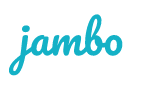Las relaciones sólidas con las partes interesadas son la base del éxito de los proyectos y de la resiliencia de las organizaciones. Las partes interesadas, ya sean clientes, comunidades, reguladores, empleados, proveedores, inversores o socios, conforman su contexto operativo. Tratar el compromiso como una relación continua, no como un ejercicio puntual de "marcar la casilla", convierte los riesgos potenciales en colaboración, conocimiento y apoyo.
Esta guía explica cómo desarrollar relaciones de trabajo eficaces con las partes interesadas, por qué es esencial establecer relaciones con ellas, cómo hacerlo y cómo el software de gestión de las relaciones con las partes interesadas puede facilitar la creación de esas relaciones.
¿Qué son las relaciones con las partes interesadas?
Las relaciones con las partes interesadas son las conexiones profesionales que una organización establece y mantiene con personas o grupos interesados en sus actividades, decisiones o resultados. Estas partes interesadas incluyen a las internas, como empleados y directivos, y a las externas, como clientes, inversores, proveedores, reguladores y comunidades. Pueden influir en una empresa aportando opiniones, lealtad, recursos, aprobaciones o capital.
Sus intereses pueden abarcar toda la empresa o centrarse en proyectos específicos. Las relaciones eficaces con las partes interesadas son intencionadas y se gestionan mediante planes de compromiso y comunicación a medida que respetan los intereses, la influencia y las preferencias de cada una de ellas.
¿Por qué es importante establecer relaciones con las partes interesadas?
Construir relaciones sólidas con las partes interesadas es un requisito porque crea valor mutuo. Desde una perspectiva empresarial, genera confianza, lealtad y un compromiso más profundo con los objetivos de la organización.
Desde la perspectiva de las partes interesadas, un compromiso significativo les proporciona acceso a información oportuna, recursos y oportunidades que de otro modo no tendrían. Estas relaciones bidireccionales mejoran las decisiones, reducen el riesgo y sientan las bases del éxito a largo plazo.
Razones principales por las que es importante establecer relaciones con las principales partes interesadas:
- Confianza y "licencia social para operar": La comunicación transparente y bidireccional fomenta la credibilidad, reduce la oposición y facilita la obtención de autorizaciones y el mantenimiento de la confianza de la comunidad y las autoridades reguladoras.
- Mejores decisiones, menos sorpresas: Las partes interesadas aportan conocimientos locales, preocupaciones y oportunidades que no encontrará en los planes internos. La participación temprana mejora las hipótesis, reduce las repeticiones y refuerza la gestión de riesgos.
- Gestión de problemas, no de crisis: La escucha continua le ayuda a detectar problemas en una fase temprana, priorizar las respuestas y actuar cuando aún hay tiempo de influir en los resultados, evitando que los problemas menores se agraven.
- Alineación y claridad: Muchos fracasos de proyectos se remontan a objetivos poco claros y expectativas dispares. El contacto periódico mantiene actualizados los requisitos, registra los acuerdos y evita que alguien diga : " Nunca acordamos eso".
- Reputación y resistencia: Ser considerado ético, receptivo y transparente refuerza su marca, mejora la narrativa de los medios de comunicación y crea una buena voluntad que ayuda en los momentos difíciles.
- Cumplimiento y ASG: El compromiso documentado respalda las obligaciones reglamentarias, es decir, los requisitos de consulta y los informes ASG, demostrando la responsabilidad ante los consejos, los inversores y el público.
- Eficiencia y control de costes: La implicación de las partes interesadas reduce los retrasos, las disputas y los cambios de alcance, ahorrando tiempo y presupuesto en todo el ciclo de vida.
- Innovación y crecimiento: La creación conjunta con usuarios, comunidades y socios revela necesidades insatisfechas, nuevos mercados y mejores soluciones.
- Fomenta una colaboración más fluida: Los proyectos suelen implicar a múltiples grupos de partes interesadas con diferentes prioridades. La confianza garantiza que estos grupos estén más dispuestos a trabajar juntos, a comprometerse y a centrarse en objetivos compartidos en lugar de en agendas individuales.
- Crea un espacio para el desafío constructivo: Una relación sólida te permite cuestionar las expectativas poco realistas, y es más probable que las partes interesadas acepten tu orientación cuando saben que te centras en su mejor resultado.
- Las personas y la cultura: Los empleados también son partes interesadas. Una comunicación clara y la participación mejoran la moral, la retención y la adopción del cambio.
- Reduce la fricción durante el conflicto: Los desacuerdos son inevitables. Pero cuando hay confianza, las partes interesadas abordan el conflicto con la convicción de que estás trabajando en su mejor interés, lo que facilita la búsqueda de soluciones sin dañar las relaciones.
- Aumenta la confianza de las partes interesadas en su experiencia: La coherencia, la fiabilidad y la resolución proactiva de problemas demuestran que eres de fiar. Cuando las partes interesadas ven que cumples sus promesas y gestionas los problemas con eficacia, su confianza en tus capacidades aumenta.

Cómo establecer relaciones eficaces con las partes interesadas
Las relaciones sólidas con las partes interesadas se basan en la confianza, la credibilidad, la fiabilidad, el valor mutuo y las prácticas disciplinadas, no en gestos puntuales. Si alguna vez te has preguntado : "¿Qué pasos debo dar para establecer relaciones con mis interlocutores?" A continuación encontrarás las respuestas:
1. Propósito claro y resultados compartidos: Empezar con una declaración de objetivos, limitaciones, criterios de éxito y derechos de decisión. Defina qué es negociable y qué no, y cómo se tomarán las decisiones. Documéntelo en un sencillo plan de compromiso para alinear las expectativas desde el primer día.
2. 2. Transparencia: Explicar las hipótesis, los compromisos, los plazos y los riesgos enun lenguaje accesible. Comparta el "por qué" de las decisiones y publique actualizaciones con regularidad. Mantener un registro abierto de reuniones, materiales y resultados para que cualquiera pueda saber cómo influyeron las aportaciones en la dirección.
3. Escucha activa y empatía: Utilice entrevistas, ayuntamientos, encuestas y horas de oficina para captar preocupaciones y aspiraciones. Reflexione sobre lo que ha oído ("usted ha dicho esto"). Practique la competencia cultural adaptando elformato, el lenguaje y el calendario a las normas de la comunidad; ofrezca servicios detraducción y accesibilidad.
4. Fiabilidad y seguimiento: Haga un seguimiento de las promesas, las fechas de vencimiento y el estado en elregistro de compromisos con los propietarios. Envía recordatorios, informa de los progresos y cierra el círculo públicamente. La constancia en el cumplimiento de los plazosy la calidad genera confianza con el tiempo.
5. Co-creación, no consulta unidireccional: Implique a la gente desde el principio en el planteamiento del problema y el diseño de la solución.Talleres de codiseño, grupos consultivos o jurados ciudadanos. Cuando proceda, respetelos principiosdel consentimiento libre, previo e informado (CLPI) para defender los derechos y la autonomía.
6. Equidad e inclusión: Determinar quién está afectado o es influyente utilizando un modelo de clasificación de las partes interesadas como la Matriz de Poder-Interés o elModelo de Saliencia de las Partes Interesadas. Incorpore a las voces infrarrepresentadas, compense la experiencia vivida cuando proceda y elimine las barreras a la participación, como el cuidado de los niños, los viajes y los estipendios.
7. Arquitectura de comunicación: Construir un mapa de mensajes y un plan de canales en función del segmento de audiencia:
- Establecer una cadencia predecible, como un resumen mensual, sesiones informativas sobre hitos...
- Elija los canales preferidos (correo electrónico, SMS, seminarios web, en persona)
- Mensajes claros, visuales y concisos
- Ofrecer vías bidireccionales para preguntas y quejas
8. Gobernanza y rendición de cuentas: Aclare las funciones, ya sea utilizando el modelo Responsable, Contable, Consultado e Informado (RACI) o el modelo Conductor, Aprobador, Colaborador e Informado (DACI). Asimismo, deben definirse vías de escalonamiento y establecerseun mecanismo sencillo de reclamación. Invite periódicamente a una revisión independiente o a la facilitación de terceros en asuntos delicados para aumentar la confianza.
9. Medición y aprendizaje: Realice un seguimiento de los indicadores principales y secundarios, como el cumplimiento puntual de los compromisos, la asistencia y la participación, las tendencias de opinión, el índice de confianza, el tono de los medios de comunicación y el volumen de disputas. Realice revisiones a posteriori, publique las lecciones aprendidas y ajuste el enfoque.
10. 10. Gestión de datos y privacidad: Obtenga el consentimiento informado, asegure los registros y siga las normas de conservación. Utilice un software seguro de gestión de las relaciones con las partes interesadas, aplique un acceso basado en funciones y evite compartir datos personales más allá de lo necesario. La gestión responsable de los datos es en sí misma una señal de confianza.
11. Detección precoz de riesgos y gestión de problemas: Supervise las señales a través de los canales, registre las preocupaciones a medida que aparecen, clasifíquelas por impacto/probabilidad, actúe mientras aún hay tiempo para influir en los resultados y evalúe los resultados. La acción preventiva protege la reputación y las relaciones.
Más información sobre la gestión de las relaciones con las partes interesadas →
Los puntos siguientes muestran cómo un SRM le ayuda a construir relaciones de confianza con las partes interesadas: mantiene un historial compartido de cada interacción, personaliza la comunicación, realiza un seguimiento y cumple los compromisos, resuelve las preocupaciones rápidamente y hace que el progreso sea visible para todos.










